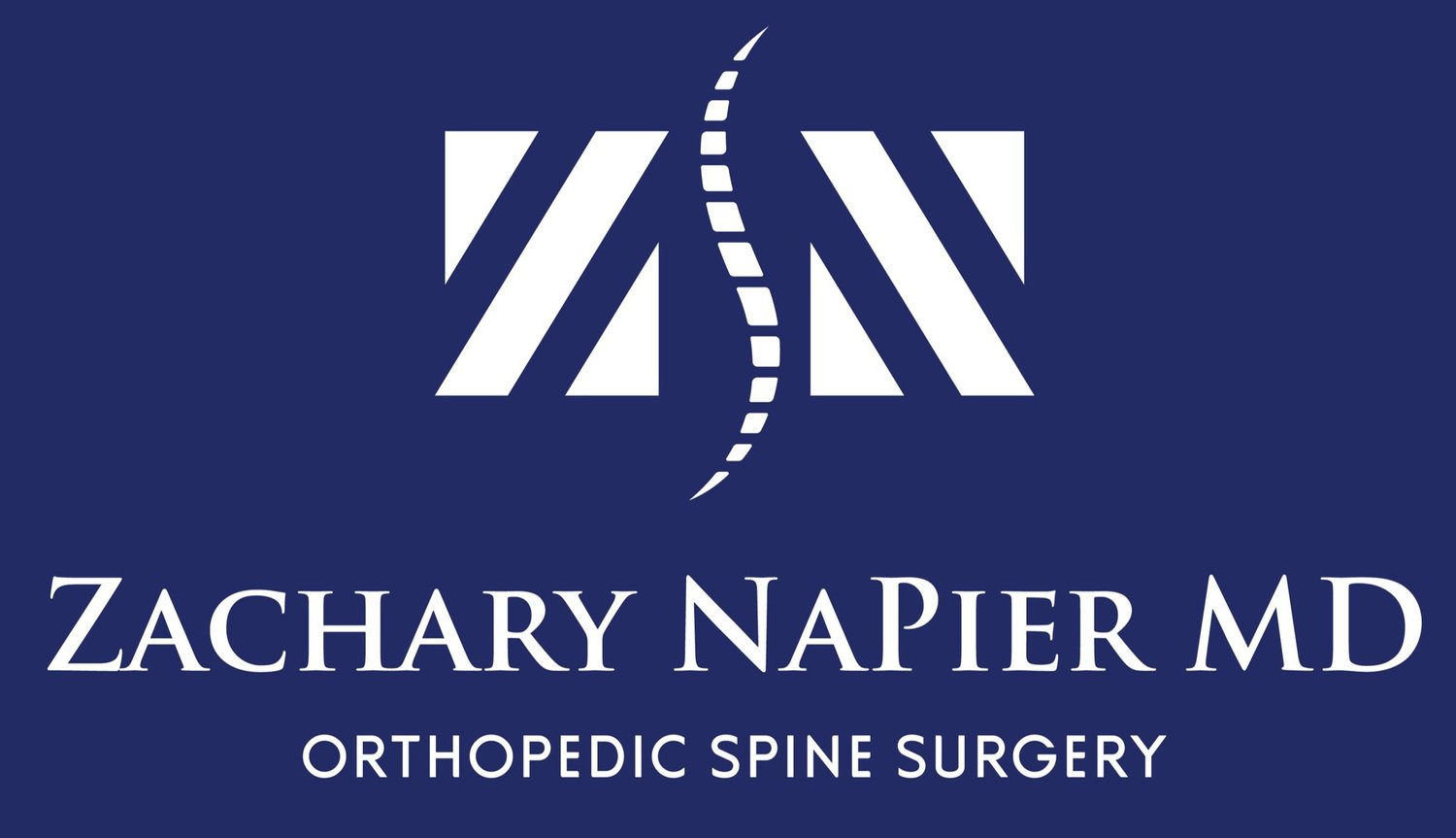
Neck Pain Specialist
Neck Pain is a very common reason for patients to visit a spine surgeon
Neck Pain Q&A?
-
What is neck pain?
Neck pain is pain that is experienced in the center of a patient’s neck and surrounding muscles.
-
How common is neck pain?
Neck pain is an extremely common finding in patients presenting to a spine surgeon.
-
What causes neck pain?
Neck pain has many causes. Acute neck pain is usually caused by an injury. Chronic neck pain is usually caused by age related wear and tear or osteoarthritis of the cervical spine. The weight of the human head can place substantial stress on the intervertebral discs that cushion the bones of the cervical spine. Neck pain can also come from wear and tear of the facet joints in the back of the neck.
-
What will Dr. NaPier do in a neck pain evaluation.
Dr. NaPier will listen to your concerns and perform a physical examination to assess for the health of your spine and nerves. He will then review relevant imaging including X-ray, CT scan, and MRI. Then, he will work together with you to formulate a customized treatment plant to help you feel better.
Related Services
-
Cervical Myelopathy is a dysfunction of the spinal cord. When the spinal cord is compressed in the cervical spine, patients develop gait imbalance (“wobbly gait”), hand dysfunction (difficulty with handwriting and fine motor tasks), as well as other clinical symptoms such as hyperactive reflexes. If you notice that your balance or hand function has been worsening, you may have cervical spinal cord compression. Cervical myelpathy is especially common in patients with lumbar spinal stenosis.
-
Cervical Radiculopathy refers to cervical nerve root dysfunction, usually due to compression from disc herniation or bone spurs. Due to a phenomenon called referred pain, patients with nerve root compression in their cervical spines will experience pain radiating to their shoulders, arms, and/or hands. They may also experience numbness, tingling, or weakness. If nonsurgical treatment fails to provide relief, Anterior Cervical Discectomy and Fusion (ACDF) or Cervical Artificial Disc Replacement (ADR) are very effective treatments.
-
Degenerative disc disease (DDD) is extremely common with >50% of asymptomatic patients over age 40 and >95% of asymptomatic patients over age 65 demonstrating signs of DDD on MRI. DDD in itself does not require surgery. However, which DDD leads to collapse of nerve root tunnels, spinal instability, or spinal deformity causing significant disability then surgery can provide significant relief of symptoms.
-
Disc herniation occurs when the nucleus pulposus or gelatinous inner filling of an intervertebral disc herniates through a defect or crack in the annulus fibrosis or outer crust. Herniated disc material can cause nerve pain by direct mechanical compression and also through chemical inflammation surrounding nerve roots. Most disc herniations can be treated nonsurgically and those that do not improve with conservative treatment can be removed with a minimally invasive, outpatient microdiscectomy.
-
The sports with the highest risk of catastrophic spinal injuries are football, ice hockey, wrestling, diving, skiing and snowboarding, rugby, cheerleading, and baseball. A common mechanism of injury for all at-risk sports is an axial compression force to the top of the head with the neck slightly flexed.
-
Whiplash occurs with forced hyperextension of the lower cervical vertebrae and affects up to 83% of patients involved in automobile collisions. Patients who have persistent burning pain, numbness, or weakness of the shoulder, arms, or hands should see Dr. NaPier for evaluation.
-
Many common spine injuries such as disc herniation or spine fracture can occur as a result of work-related injuries. It is important to seek medical care in order to determine the extent of these injuries and whether there may be any lasting consequences of the injury.
